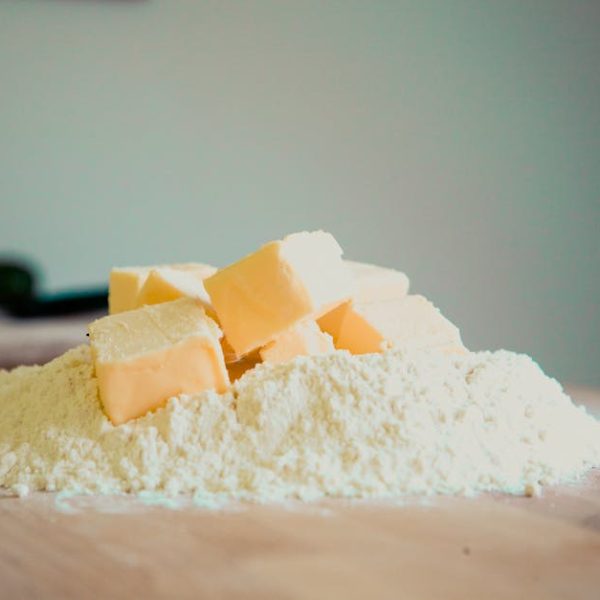Salami is a type of cured sausage made from fermented and air-dried meat, typically pork. Noted for its distinctive flavor, rich in spices and a mark of traditional Italian cuisine, salami is a versatile ingredient used in an array of dishes. Though salami is cured, which extends its shelf life, it doesn’t mean it is immortal. Typically, unopened salami can last up to six months in the fridge and around three weeks after it’s been opened.
The shelf life of salami is contingent on several factors including the kind of packaging, the storage temperature, and how it is handled. Packaging protects the salami from exposure to the air, extending its shelf-life. The recommended storage temperature for salami is below 40°F (4°C). Higher temperatures stimulate bacterial growth, hastening its spoilage. How you handle the salami, specifically how often you touch it or expose it to air, also impacts its freshness.
Tell-tale signs that your salami has spoiled include changes in texture, color, and smell. If the salami feels slimy or excessively hard, turns gray or greenish, or emits a sour odor, it’s time to toss it.
All worries aside, storing salami properly can keep it fresh and charmingly flavorful for longer. Various ways to store salami are vacuum sealing, refrigeration, and freezing.
- Vacuum sealing prevents air exposure and thus, extends its shelf life.
- Refrigeration is the most common storage method. Refrigerated salami remains best in quality for about three weeks but will remain safe to consume thereafter if no spoilage signs are evident.
- Freezing, though less common, significantly lengthens the salami’d shelf life. However, it may slightly alter its flavor and texture.
Considering pros and cons, each method caters to different circumstances: if you are a sporadic salami eater, freezing is recommended. If you consume salami regularly, then refrigeration is your best bet, and if you want to extend your salami’s lifespan without compromising its flavor and texture, vacuum-sealing hits the mark.
Once you’ve stored your salami, consuming it safely is the next step. Stored salami requires careful handling and inspection before eating. Having a systematic checklist can be useful here. Begin by cleaning your hands thoroughly. Next, inspect the salami for any signs of spoilage – off-putting smell, slimy texture, and discoloration. If stored in the freezer, ensure to thaw it properly in the refrigerator rather than at room temperature to prevent bacterial growth. A pro tip when handling salami that’s a bit over its ‘best-by’ date: as long as it doesn’t show any signs of spoilage, cooking it thoroughly can kill any potential bacteria, making it safe to eat. The freshness and flavor of your stored salami also contribute immensely to your culinary experience. Keeping your salami fresh and aromatic not only makes it safe for consumption but also amplifies your dishes. Here’s how you can maximize freshness and flavor:
- Store in an airtight container: This prevents air from oxidizing the salami, keeping its taste intact.
- Slice it only when you need it: Cutting up your salami exposes more surface area to air. By slicing it only when needed, you preserve its taste better.
Adding stored or possibly stale salami to your meal doesn’t mean you have to compromise on taste. A pro tip here: light frying of the salami before using it in your dishes can revive its flavors, giving you a delightful gastronomic experience.
The effect that spoiled salami has on one’s health is not to be underestimated. Consuming spoiled salami can lead to foodborne illnesses, potentially causing symptoms like nausea, vomiting, diarrhea, fever, and abdominal cramps. Some people may also experience difficulty breathing or swallowing, severe dizziness or loss of coordination, and long-term effects on the nerves or brain. If you ever suspect that you’ve consumed spoiled salami, don’t hesitate to seek medical help. Your health should always be your top priority.
In conclusion, the shelf life of salami depends heavily on how it’s stored and inspected prior to consumption. With appropriate practices, you can enjoy flavorful, fresh salami for a considerable period. And remember, if in doubt about a salami’s freshness, it’s better to be safe than sorry. So, here’s to safe and enjoyable culinary explorations with salami!
Key Takeaway:
- Salami, although preserved, does have a shelf life that can be influenced by factors such as packaging, temperature, and handling.
- Proper storage methods – vacuum sealing, refrigeration, or freezing – can significantly extend the freshness and quality of salami.
- It’s crucial to inspect stored salami for signs of spoilage before consumption. This includes looking for changes in texture, color, and smell.
- Incorporating stored salami into meals without compromising flavor can be achieved with some tips like frying before use.
- Consuming spoiled salami can lead to severe health complications, emphasizing the importance of proper storage, handling, and consumption.
Adopting the right practices can make your salami longer-lasting and safe to consume. It gives your dishes a delightful flavor and zing, enriching your food experiences. Always remember to store it correctly, check it well before cooking, and seek medical attention if you suspect any negative health impact due to potentially spoiled salami. Every culinary journey should only leave a pleasing, lasting taste, not a harmful one.
FAQs
Q: What makes vacuum-sealing a better option for storing salami?
A: Vacuum sealing is a preferable method because it prevents air exposure, which can lead to oxidization and negatively affect the salami’s freshness and flavor.
Q: How can I properly thaw frozen salami?
A: For safely thawing frozen salami, it is best to thaw it in the refrigerator. This method avoids the risk of bacterial growth, unlike leaving it out at room temperature.
Q: Can I eat salami that has passed its ‘best-by’ date?
A: Yes, it’s usually safe to eat salami that has exceeded its ‘best-by’ date as long as it doesn’t show signs of spoilage. However, if you sense even a slight off-putting smell, strange color, or unusual texture, discard it instead of consuming.
Q: How do I recognize if my salami has spoiled?
A: Look for signs like a change in color (usually gray or green), texture (becoming hard or slimy), and a sour or unpleasant smell. Any of these indicators may suggest that the salami has spoiled.
Q: How long can I keep my salami in the fridge after opening?
A: Once opened, salami can usually maintain its best quality in the refrigerator for about three weeks. Yet, it will remain safe to consume beyond this period if it shows no signs of spoilage.
Remember to share this article and explore more useful posts on our website. Happy cooking and enjoy every flavorful bite!






